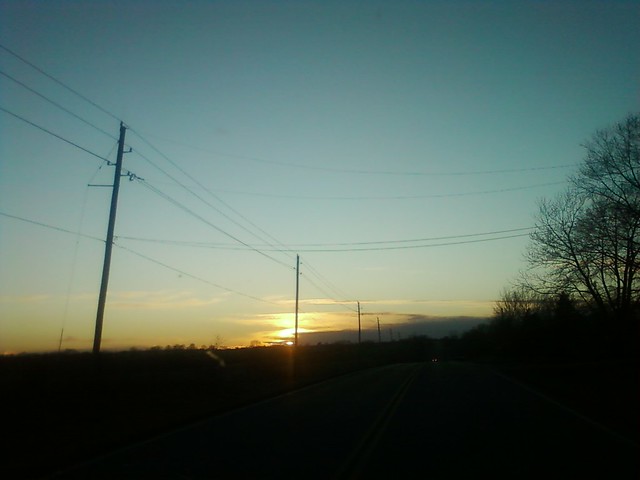
I got home early Friday. I had to wear my sunglasses for the drive home, always a good sign when you want to do some planet hunting soon after sunset. Since I had more than an hour before the sun would set, I put my latest Netflix BluRay in the player (one of the final two Nebular nominations I hadn’t seen yet) and began watching some strange British science fiction teenage alien mashup (more on that later in a separate review post). I almost watched too long when I realized, at about ten ’til six, that the sun was setting and some clouds had creeped up on the west/northwestern horizon. The camera backpack and tripod were already in the van, so I just grabbed my the keys and took off, telling Terry I’d be back after awhile.
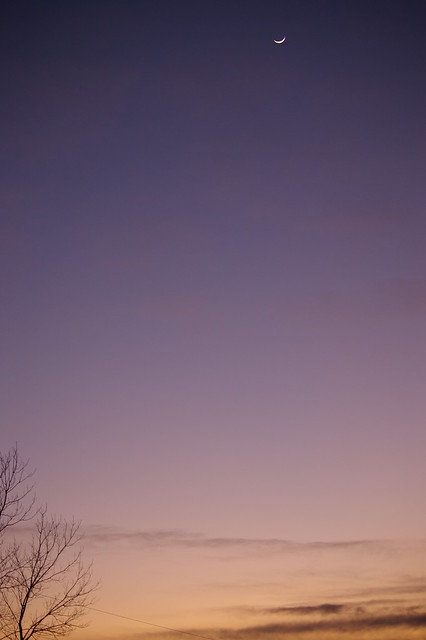
I crossed K-7/US-73, taking 4-H Road west and continue west and southwest until I ended up on a gravel road on a hilltop in a field with an almost unobstructed view to the western horizon. The sunset, which had looked promising (see photo above), fizzled as the clouds continued to encroach from the northwest. I trudged out into the pasture and setup my tripod and attached the camera to it. I took a few sunset photos, none of which really did anything for me, except the one to the right, which included the moon (but not much of the horizon since I had the telephoto lens attached and the field of view was a bit restricted). I had only thrown on a sweater in my rush out of the house, so my fingers kept losing feeling when I needed them most to make adjustments to the camera. While there wasn’t much of a wind, what there was chilled rapidly as the light faded with the setting sun.
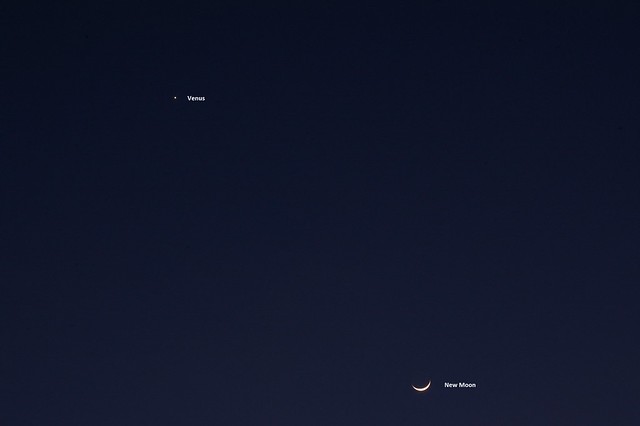
Before much longer, though, I could easily spot Venus about five degrees above (and to the left) of the two day old moon. I surprised myself when I extracted the photos from the memory card this morning. When I looked closely at Venus (in the photo above), I actually captured a star-burst thanks to my aperture setting for that shot.
But the most difficult shot to capture last evening was a combination of Jupiter, Venus and the New Moon – all together in one shot. I barely got them squeezed into the field of view with the telephoto and twisted the tripod into an odd angle to capture this wonderful photo:
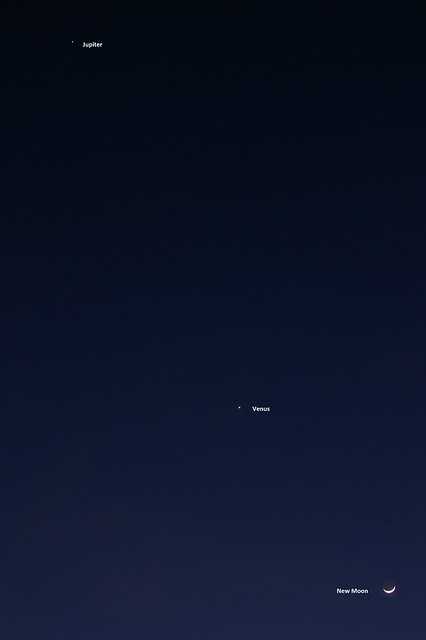
The clouds never cleared along the western horizon, so I did not have an opportunity to see Mercury. If the sky remains clear today and into this evening (and I have hopes of that happening), I will have yet another opportunity this evening to view Mercury, together with Venus, Jupiter and the New Moon.
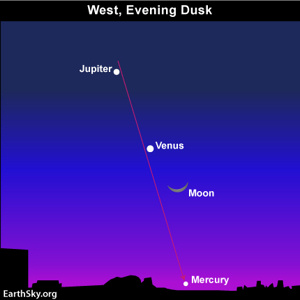 If you live in the Northern Hemisphere, and are blessed with an unobstructed western horizon and clear skies, look for the planet Mercury as dusk gives way to nightfall. Look for Mercury to appear near the sunset point on the horizon some 40 to 60 minutes after sundown. Or if you have binoculars, try catching Mercury 30 minutes (or less) after the sun goes down.
If you live in the Northern Hemisphere, and are blessed with an unobstructed western horizon and clear skies, look for the planet Mercury as dusk gives way to nightfall. Look for Mercury to appear near the sunset point on the horizon some 40 to 60 minutes after sundown. Or if you have binoculars, try catching Mercury 30 minutes (or less) after the sun goes down.
Jupiter and Venus help guide you to Mercury, the solar system’s innermost planet. Draw an imaginary line from the right side of Jupiter and past the left side of Venus to spot Mercury near the horizon. But don’t tarry when searching for Mercury. At present, this world sets just a bit over one hour after sunset at mid-northern latitudes.
*** (Last two paragraphs and graphic courtesy of today’s Earthsky article).
At about fifteen minutes to seven, I packed up the camera equipment and headed back to the van. The clouds from the north had snuck up on me, so much so that I could see the orange of the prison lights glowing from their low hanging bellies. I retraced my drive back home. I looked up as I got out of the van and was surprised to note that the clouds had almost completely obscured Juptier and Venus, although the sliver of the New Moon still shone bright. By the time I finished dinner and the movie, though, all I could see out the back patio door were the orange glowing low hanging clouds.
I woke up to a brand new day and a crystal clear dawn. Less than twelve hours, now, until I can hunt for Mercury again.
